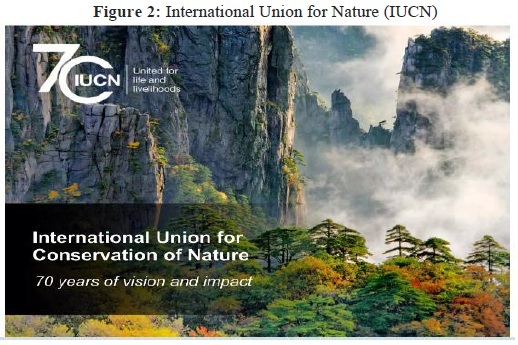Assessment of Indian Blue Peafowl in Certain Areas
DOI:
https://doi.org/10.54741/asejar.1.6.6Keywords:
Indian peafowl, agriculture regions, variety of habitats, croplandsAbstract
There were 247 peafowl in total, which is abundant. In the research regions, there were 61 chicks, 93 fowls, and cocks (sex ratio: 1:1). The abundance of peafowl was seen in a variety of habitats, including rice paddies, sugarcane fields, banana plantations, bamboo vegetation, and bodies of water with aquatic grasses. The bamboo vegetation (n = 35) had the lowest abundance, and the banana plantation (n = 61) had the maximum abundance. In the meantime, paddy fields (n = 48), aquatic grasses (n = 55), and sugar cane habitat (n = 50) the research was done between October 2021 and April 2022. Peafowl abundance in various areas in and around Innambur village, Kumbakonam Taluk, was examined over the course of seven months. The peafowl abundance showed a monthly fluctuation. The most peafowl sightings—13—were recorded in the month of February. Peafowl sightings were at their lowest in November and March, respectively (n = 7). The Eragaram area had the most peafowl sightings (n = 35; males 18, females 11, and chicks 6). The number of Indian peafowl sightings per kilometre walked in the study region was used to express the sightings. Paddy, sugarcane, banana plantations, bamboo vegetation, and aquatic grasses are among the ecosystems. There were 247 total reports of Indian peafowl in the study area. The ecosystem of the banana plantation was thought to have the highest sightings. The bamboo vegetation was where the fewest sightings were observed. It demonstrated the average number of Indian peafowl sightings in the different habitats.
Downloads
References
Chakkaravarthy, Q. A. (2002). Call to save our national bird, Indian Peafowl (Pavo cristatus). Proceedings of the National Symposium on Galliformes, Division of Wildlife Biology, AVC College, Bharathidasan University, Tamil
Nadu.
Nyhus, P. J., Fischer, H., Madden, F., & Osofsky, S. (2003).Taking the bite out of wildlife damage: The challenges of wildlife compensation schemes. Conservation in Practice, 4, 37–40.
Ogra, M., and Badola, R., (2008): Compensating human-wildlife conflict in Protected Area communities: Ground level perceptions from Uttarakhand, India. Human Ecology 36, 717–729.
Ramesh, K., and McGowan, P. (2009). On the current status of Indian Peafowl Pavocristatus (Aves: Galliformes: Phasianidae): keeping the common species common. Journal of Threatened Taxa, 1(2), 106–108.
Grimmett, R., Inskipp, C., & Inskipp, T. (2011): Birds of the Indian Subcontinent. (2ed.). London: Oxford University Press & Christopher Helm. pp. 1–528.
Pradhan, V., Dar, M. A., Rather, M. M., Panwar, M., & Pala, N. A. (2012). Human-wildlife conflict in Kitam Bird Sanctuary: Perceptions and possible solutions. The Indian Forester, 138, 915–920.
Bird Life International. (2012). Pavocristatus IUCN Red list of threatened species. International Union for Conservation of Nature.
https://kids.nationalgeographic.com/animals/birds/facts/indian-peafowl.
Karanth, K. K., Gopalaswamy, A. M., Defries, R., and Ballal, N. (2012). Assessing patterns of human-wildlife conflicts and compensation around a central Indian protected area. PLoS ONE 7, 1–13.
Veeramani,A. (2013). Ecological study of the Indian Peafowl (Pavocristatus) in MudumalaiWildife Sanctuary, NilgiriBiospher Reserve. Abstract, NBRSJC held in Government Arts College-Udhamanadalam, Tamil Nadu.pp 80.
Panda S., Panigrahi G.K., & Padhi S. (2016). Wild Animals of India. Hamburg: Anchor Academic Publishing. 67p.
Rameshkumar, C kalaiyarasi, G, & Subramaniuan, C. (2017). density and distribution of indian peafowl (pavo cristatus) in the meghamalai forests, Tamil Nadu, western ghats of southern India. International journal of Advanced Research. http://dx.doi.org/10.21474/IJAR01/5120, 5(8), 789-794. 13. Thapa, A., A. Singh, P.K. Pradhan, B.B. Joshi, M. Thakur, L.K. Sharma, & K. Chandra. (2020). Is the Indian Peafowl Pavo cristatus.
https://www.slideshare.net. 15. Rajpoot, A., V.P. Kumar, K. Arunachalam, & S.S. Rasaily (2021): National bird Indian Peafowl (Pavo cristatus): Using DNA technology for species identification from degraded sample from Uttarakhand, India. Forensic Sci. Int.: Animals and Environments 1: 100004.

Published
How to Cite
Issue
Section
ARK
License
Copyright (c) 2022 Dr. Gargi

This work is licensed under a Creative Commons Attribution 4.0 International License.
Research Articles in 'Applied Science and Engineering Journal for Advanced Research' are Open Access articles published under the Creative Commons CC BY License Creative Commons Attribution 4.0 International License http://creativecommons.org/licenses/by/4.0/. This license allows you to share – copy and redistribute the material in any medium or format. Adapt – remix, transform, and build upon the material for any purpose, even commercially.










